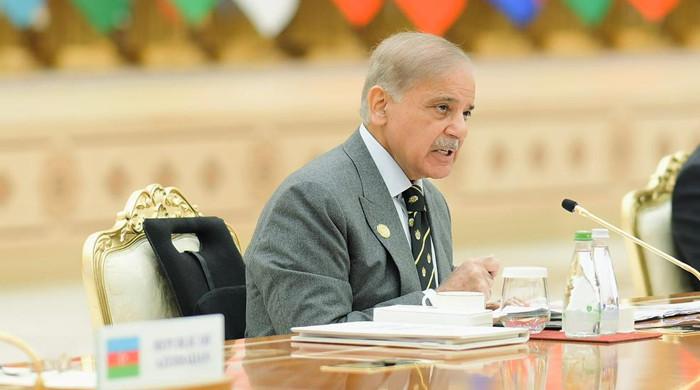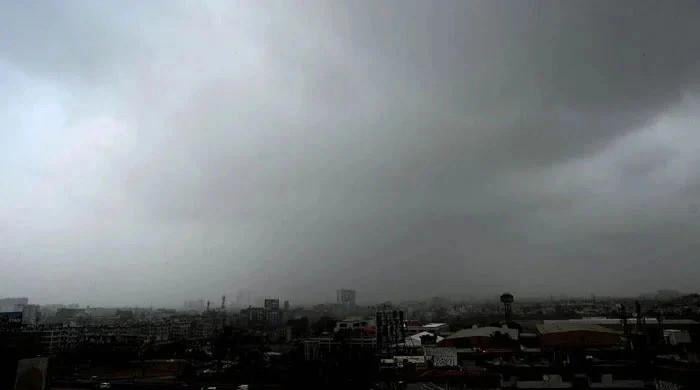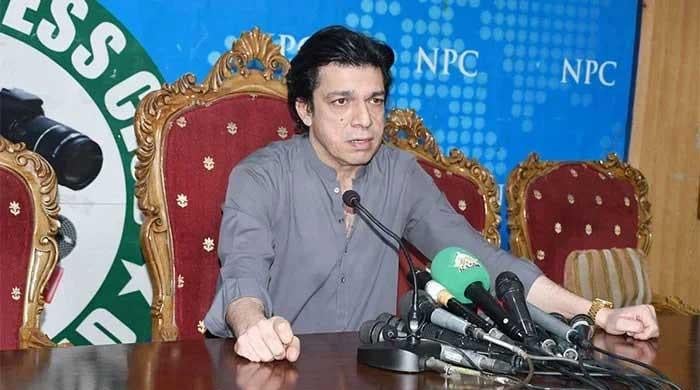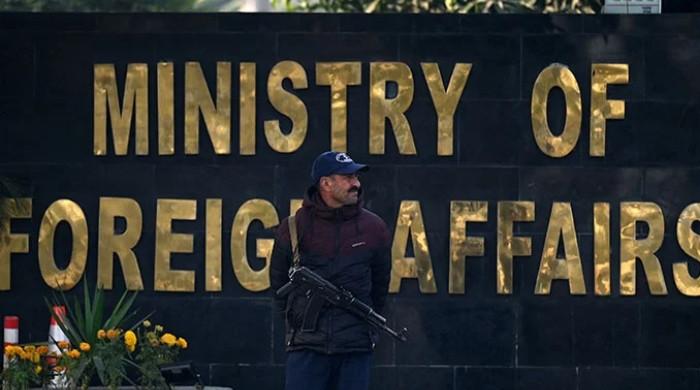Washington Post examines disinformation in Indian media amid war with Pakistan
“The [news] channels were taken over by bad fiction writers,” says a media worker
June 05, 2025

In an interview with The Washington Post, journalists from various Indian biggest media houses discussed why lies were so prevalent during the country's most recent war with Pakistan. The nation's information environment was overrun with lies, the paper learnt in a report by Karishma Mehrotra.
As per Mehrotra's account, Prasar Bharati, the state-owned public broadcaster, sent a WhatsApp message to an Indian media person just after midnight on May 9. The message stated that a coup was in progress and that Pakistan's army chief had been apprehended, The News reported.
The journalist shared the information on X right away, and others did the same. It quickly gained popularity on social media and was broadcast on major Indian news networks.
The complete "breaking news" was untrue. No coup took place in Pakistan. In contrast to the reports of General Asim Munir’s arrest, he was soon to be elevated to the field marshal’s rank.
It was the most glaring — but far from the only — example of how misinformation swept through Indian newsrooms in May during several of the most violent nights between the nuclear-armed neighbours in decades.
The Washington Post spoke to more than two dozen journalists from some of India’s most influential news networks, as well as to current and former Indian officials, about how the country’s information ecosystem became inundated with falsehoods — and how it warped the public’s understanding of a crucial moment. The journalists spoke on the condition that their names and employers remain anonymous, fearing professional reprisals. Most of the officials spoke on the condition of anonymity to discuss sensitive information.
As the fighting escalated night after night, few Indian officials were put forward to explain what was happening, said Nirupama Rao, India’s former foreign secretary. The vacuum was filled on television newscasts by “hypernationalism” and “abnormal triumphalism,” Rao said, creating what she called a “parallel reality.”
Times Now Navbharat reported that Indian forces had entered Pakistan; TV9 Bharatvarsh told viewers that Pakistan’s prime minister had surrendered; Bharat Samachar said he was hiding in a bunker. All of them, along with some of the country’s largest channels — including Zee News, ABP News and NDTV — repeatedly proclaimed that major Pakistani cities had been destroyed.
To support the false claims, networks aired unrelated visuals from conflicts in Gaza and Sudan, from a plane crash in Philadelphia — and even scenes from video games.
Zee News, NDTV, ABP News, Bharat Samachar, TV9 Bharatvarsh, Times Now and Prasar Bharati did not respond to requests for comment.
“It’s the most dangerous version of what a section of TV news channels have been doing for a decade, completely unchecked,” said Manisha Pande, media critic and managing editor of Newslaundry, an independent news outlet. “At this point, they’re like Frankenstein’s monsters — completely out of control.”
'Bad fiction writers': India has one of the most expansive and linguistically diverse media landscapes in the world. Around 900 television channels attract millions of viewers each evening across Indian towns and cities; newspapers still have a wide reach in rural areas.
Over many decades, the country’s independent press has played a critical role in exposing government corruption and holding power to account. In the past decade, however, particularly in television news, that independence has been eroded.
Some of India’s largest channels now routinely echo government talking points, analysts say — out of ideological alignment with the ruling Bharatiya Janata Party, or as a result of pressure from the state, which has prosecuted journalists under terrorism, sedition and defamation laws, as well as by using regulatory threats and tax probes to silence critical voices.
Pande also attributes the shift to opportunism. “For most of these anchors, aligning with power is a calculated career move,” she said.
Journalists in these newsrooms were dismayed by the lack of fact-checking during the conflict. “Journalism has just become anything that lands on your WhatsApp from whoever,” said one journalist with a leading English-language news channel. “You realise the cost of that at times like this.”
Just before midnight on May 8, in a WhatsApp message exchange seen by The Post, a journalist with a major Hindi-language network messaged colleagues: “Indian navy can carry out an attack imminently,” citing unnamed sources. Another staffer responded simply, “Karachi,” but gave no details on sourcing. Within minutes, the channel was falsely reporting that the Indian navy had struck the port in Karachi, Pakistan’s largest city.
“The channels were taken over by bad fiction writers,” a network employee said.
A journalist in a different newsroom said their channel ran the story after confirmation from the Indian navy and air force. India’s military did not respond to a request for comment.
Others admitted to airing the story based on claims from social media influencers closely aligned with the ruling party, or posts from open-source intelligence accounts.
Sweta Singh, a popular anchor on India Today, declared on air that “Karachi is seeing its worst nightmare after 1971,” referring to the most devastating war between the two countries. “It completely finishes Pakistan,” she added. Singh did not respond to requests for comment.
Around 8am on May 9, the Karachi Port Trust posted on X that no attack had occurred. But some Hindi newspapers had already published the news on their front pages.
As erroneous reports ricocheted across Indian channels, retired military officials gave them credence in freewheeling panel discussions. Breaking news banners were accompanied by the swoosh of illustrated fighter jets. At one point, the government issued a public advisory urging broadcasters to refrain from using air raid sirens in their graphics, warning it could desensitise the public to real emergencies.
“We stand by the information shared and press releases issued based on verified intelligence and digital evidence available to us,” the media wing of the Pakistani army said in a statement to The Post.
Competition drove much of the chaos in India. On NDTV, the country’s most-watched news channel according to the Reuters Institute at Oxford University, a hot mic caught a reporter in the field venting his frustration to the control room: “First you keep saying, ‘Give an update, give an update,’ and then later you say, ‘Why did you give something fake?’”
During a talk show on the Hindi news channel Aaj Tak, a young man in the audience asked about “the embarrassment we have faced from the international community when our news channels were spreading unverified information.” The reporter swung the microphone away before he could finish the question.
A head of public relations for TV Today, which runs Aaj Tak and India Today, did not respond to requests for comment.
“I felt depressed at the state of affairs,” an anchor at a leading English-language news channel told The Post. “It’s time to introspect.”
Information war: As strikes between the countries intensified each night, Indian officials, led by Foreign Secretary Vikram Misri, would generally wait until morning to brief the press.
Indian Prime Minister Narendra Modi’s first public remarks on the conflict came two days after the May 10 ceasefire; Indian Foreign Minister S Jaishankar shared only a one-line post on X during the clashes.
The vacuum was filled by television anchors. “We’ve lost the information war to these characters,” said a former Indian navy admiral.
But one senior Indian national security official said the misinformation played to India’s advantage. If lower-level government sources deliberately spread false claims, it was to “take advantage of the information space” and create “as much confusion as possible because they know the enemy is watching,” the official said.
“Sometimes the collateral is your own audience, but that is how it is,” the official added. “That is how war has evolved.”









